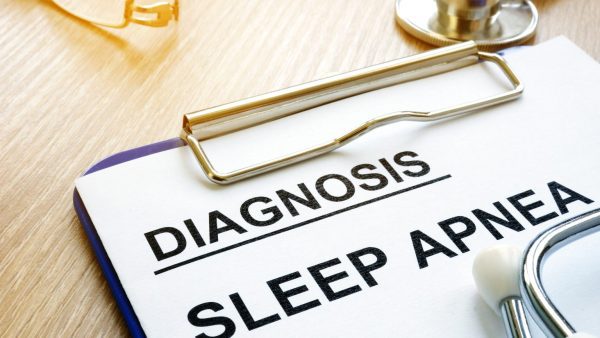Looking for Expert-Level VA Claim Answers?📱Call Us Now! 737-295-2226
VA secondary conditions to sinusitis can be severe and debilitating. If you’re a veteran who suffers from sinusitis, you must understand the different conditions that can be caused by this illness and which ones you can claim as a VA disability.
This article will discuss four VA secondary conditions to sinusitis: laryngitis, bronchitis, migraine headaches, and sleep apnea. We’ll also cover the VA rating percentage levels for these disabilities.
Table of Contents
What is Sinusitis?
Sinusitis is a sinus infection that interferes with how mucus drains from your body. When you get one of these infections, the inside of your nose and head become swollen and inflamed. If your sinus infection or runny nose lasts for three months or longer, the infection can be classified as chronic. Chronic sinusitis can also result from nasal polyps or if the inner lining of your sinuses swells up.
Sinusitis and rhinitis are often confused with each other. While sinusitis involves the tissue around your nose, rhinitis is an inflammation of the nose and nasal passages. Rhinitis can make you sneeze, congest, have a runny or stuffed nose, sore throat (postnasal drip), itchy eyes, and snore.
Sinusitis and rhinitis are widespread conditions in veterans, especially in veterans exposed to burn pits and other toxic environments. In some cases, the VA presumes that a veteran’s sinusitis is caused by military service due to this exposure.
In 2021, the VA made it much easier for thousands of veterans with sinusitis and rhinitis to get care. A new law granted presumptive service connection for burn pit exposure for veterans who served in Afghanistan, Southwest Asia, and certain other areas if they developed symptoms within ten years of separation from active duty.
Most of the time veterans dealing with sinusitis have symptoms including a stuffy nose, difficulty breathing through the nose, and swollen or tender areas around the eyes. However, this is just the start as chronic sinusitis can lead to other conditions.
If you’re dealing with chronic sinusitis, check out our article on how to get a sinusitis rating.
What are the VA secondary conditions to sinusitis?
There are four VA secondary conditions to sinusitis we discuss in this article: laryngitis, bronchitis, migraine headaches, and sleep apnea.
A secondary VA claim is when a service-connected disability causes or aggravates another condition. You can win a secondary VA claim by filing for it with your original VA claim. Or you can file a new claim if you’re already rated for the primary condition.
Sinusitis can cause the mucus in the sinuses to become thick and hard to drain. This can lead to a buildup of pressure in the sinuses, which can cause pain. If left untreated, sinusitis can lead to other problems as well.
What VA Rating can I get for VA secondary conditions to sinusitis?
The VA will give you a separate rating for each VA secondary condition to sinusitis. The ratings range from 0% to 100%, based on the condition and the severity of symptoms.
For example, if you have infrequent headaches due to your sinusitis, you may be rated at 0%, while if you have frequent severe migraines, you may be rated at 50%. Below we cover each condition and the rating criteria.
Laryngitis Secondary to Sinusitis
Laryngitis is an inflammation of the larynx, which is the part of your throat that contains your vocal cords. The main symptom of laryngitis is a hoarse voice, but it can also cause a sore throat and coughing. Laryngitis can make it difficult to speak or even breathe. When you have sinusitis, the mucus from your sinuses can drain into your throat and irritate your larynx. This can cause you to develop laryngitis.
In order to be rated by the VA, you must have chronic laryngitis. Acute laryngitis is a short-term problem that usually goes away after a couple of weeks. If your symptoms continue past that time, you may have chronic laryngitis.
How the VA Rates Chronic Laryngitis Secondary to Sinusitis
The VA rates chronic laryngitis at either 10% or 30%.
The VA doesn’t consider laryngitis symptoms severe enough to significantly impact your ability to work.
- 10% – You must have voice hoarseness, with inflammation of cords or mucous membrane
- 30% – You must have hoarseness with thickening or nodules of cords, polyps, submucous infiltration, or pre-malignant changes on a biopsy
If you have your larynx removed in a procedure called a laryngectomy due to sinusitis, you may be eligible for a 100% VA rating. Although, most of the time a laryngectomy is required to treat cancer and not as a result of sinusitis. However, research from the National Cancer Institute indicates that chronic sinusitis is associated with higher risks of head and neck cancers.
Bronchitis Secondary to Sinusitis
The inflammation caused by sinusitis can spread to the airways, causing bronchitis. Bronchitis is an inflammation of the air passages that lead to your lungs, making breathing difficult. The symptoms of bronchitis include coughing, wheezing, shortness of breath, and mucus.
Bronchitis is classified as a COPD (Chronic obstructive pulmonary disease). This condition has the potential to significantly impact your quality of life.
In order to be rated by the VA, you must be diagnosed with chronic bronchitis. If you’re a smoker, you will have a more challenging time proving that your sinusitis caused your chronic bronchitis. The VA’s position is often that this condition is caused by your smoking (not your sinusitis).
To be diagnosed with COPD, you’ll need to take a breathing test called a Spirometry test or a similar test that measures your breathing.
Timing is essential to get your bronchitis rated as a condition secondary to your sinusitis. You must show that your chronic bronchitis began after your sinusitis; otherwise, it likely was not the cause. Make sure to document symptoms as they happen by seeing your doctor. Your medical records will be critical in proving a link between your sinusitis and bronchitis.
How the VA Rates Bronchitis Secondary to Sinusitis
The VA rates bronchitis at 10%, 30%, 60%, and 100% based on the results of breathing tests.
The criteria the VA uses measure:
- How much air you can exhale after taking a full breath
- How much air you can exhale in one second
- Your lung’s ability to transfer inhaled air to red blood cells
- How much oxygen your blood uses while you’re exercising
Based on the numerical values of these criteria, the VA will use these to assign you a VA rating from 10% to 100%.
If you require outpatient oxygen therapy due to bronchitis, you’re eligible to be rated at the 100% level. If you meet one of these criteria, you’re also eligible for a 100% rating:
- Right heart failure
- Right ventricular hypertrophy
- Pulmonary hypertension shown by Echo or cardiac catheterization
- Episode(s) of acute respiratory failure

Sleep Apnea Secondary to Sinusitis
Sleep apnea is a serious condition in which you stop breathing for short periods of time while you sleep. Sleep apnea can cause fatigue, mood swings, and even heart problems. If you suffer from sinusitis, you’re at a higher risk of developing sleep apnea.
A veteran with chronic sinusitis (and does not properly treat it) is more likely to develop sleep apnea. This is because the inflammation of your sinuses can cause congestion and block your airways, making breathing difficult, especially at night.
Symptoms of sleep apnea include snoring, stopping of breathing, waking up gasping for air, always being tired during the day, morning headaches, mood swings, and even depression.
When seeking treatment for your sleep apnea, discuss how your sinusitis symptoms contribute to your sleep apnea or your sleep apnea appears to worsen when your sinusitis symptoms flare up. It’s important to document that your chronic sinusitis began before your sleep apnea if you want to prove that this is a secondary condition.
How the VA Rates Sleep Apnea Secondary to Sinusitis
The VA rates sleep apnea at 0%, 30%, 50%, or 100%.
- 0% – You have a documented sleep disorder with no symptoms
- 30% – You are chronically sleepy during the day (persistent daytime hypersomnolence)
- 50% – You use a CPAP machine when sleeping
- 100% – You either have chronic respiratory failure, need a tracheostomy, or enlargement or failure of the right side of your heart due to lung disease
Migraine Headaches Secondary to Sinusitis
The VA has awarded veterans ratings for migraines that are secondary to service-connected sinusitis. However, migraine headache claims can be challenging.
To win a secondary claim, you’ll want to provide medical evidence showing that you experienced migraines due to sinus-related pain and pressure from your sinusitis. Being seen by your doctor and documenting these episodes is critical.
Tracking your migraines is a requirement to win this type of claim. You can use an app called Migraine Buddy to track the frequency and severity of your migraines. Be sure to note any days where your migraines coincide with sinus pressure to help link the two together.
How the VA Rates Migraine Headaches Secondary to Sinusitis
The VA rates migraine headaches at 0%, 10%, 30%, or 50%. Earning a VA rating for headaches secondary to sinusitis depends on the frequency of your symptoms.
To earn a rating greater than 0%, your migraines must be considered “prostrating.” This means they’re so severe and debilitating that you have to rest for long periods and aren’t able to do anything. If you’re dealing with these types of migraines, you’ll be rated based on how frequently they happen:
- 10% – If your migraines are infrequent (less than one every two months on average)
- 30% – If your migraines average one each month
- 50% – You have migraines frequently enough that it becomes challenging for you to work and provide for yourself and your family.
Create a Plan for Filing for Your Secondary Conditions
When it comes to the VA, it’s always a good idea to plan how you’ll win your VA disability claim. Even if you aren’t yet rated for chronic sinusitis, but you’re dealing with conditions that were caused by your sinusitis, it’s a good idea to learn which conditions the VA recognizes as secondary and how to win a secondary claim.
How to prove VA secondary conditions to sinusitis?
In order to win your secondary claim, you either need a service-connected chronic sinusitis rating or enough evidence to earn a direct service-connected rating OR a presumptive service-connected rating when you file.
If you include these three elements that are critical to winning your claim, you’re much more likely to get a favorable outcome. Plan to include these elements to create a fully developed claim:
- A medical diagnosis of your secondary condition
- Medical evidence showing the severity of your current symptoms of the secondary condition
- A medical nexus linking your secondary condition to your chronic sinusitis
If your chronic sinusitis is already service-connected, you won’t need to prove service connection for the secondary conditions you’re claiming as long as you prove that the sinusitis caused or aggravated your secondary condition.
By filing a fully developed claim from the start, you’re making your life that much easier! The wait time will be less, and you’re more likely to get the result you deserve from your regional VA office the first time around without being forced to appeal the decision to keep pursuing the rating you rightfully deserve.
If you believe your VA secondary conditions to sinusitis are not being correctly rated, our team of experts at VA Claims Insider is here to help! We can help you file a VA claim or appeal. We have helped many veterans file and win their secondary conditions to sinusitis claims!
NEED MORE ASSISTANCE?
Most veterans are underrated for their disabilities and therefore not getting the compensation they’re due. At VA Claims Insider, we help you understand and take control of the claims process, so you can get the rating and compensation you’re owed by law.
Our process takes the guesswork out of filing a VA disability claim and supports you every step of the way in building a fully-developed claim (FDC)!
If you’ve filed your VA disability claim and have been denied or have received a low rating—or you’re unsure how to get started—reach out to us! Take advantage of a VA Claim Discovery Call. Learn what you’ve been missing—so you can FINALLY get the disability rating and compensation you deserve!
We’ve supported more than 25,000 veterans to win their claims and increase their ratings. NOW IT’S YOUR TURN.
About the Author

Trisha Penrod
Trisha Penrod is a former active-duty Air Force officer. As an Intelligence Officer, she led teams of analysts to apply advanced analytic skills to identify, assess, and report potential threats to U.S. forces.
Trisha attended the U.S. Air Force Academy and holds an MBA from Webster University. After receiving an honorable discharge in 2018, Trisha worked as a growth marketer and utilizes her analytic skills to help others accomplish their business goals.



